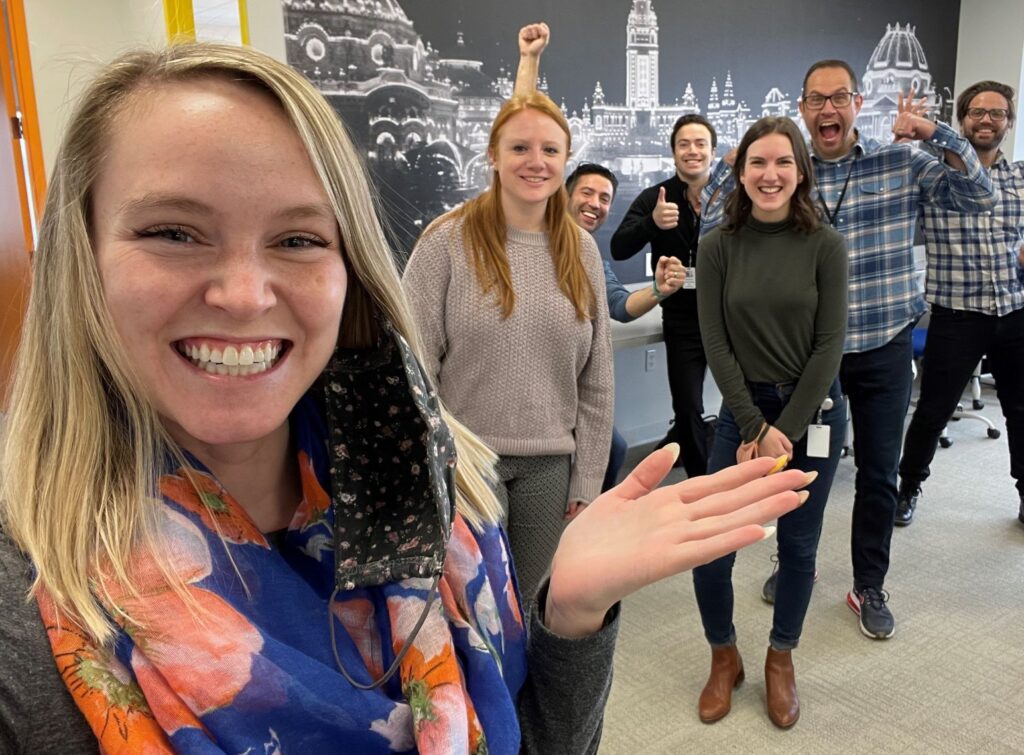Think about the best hiring process you’ve ever experienced.
Whether you worked with an agency or a corporate recruiter, you were likely met with more information than you expected. A comprehensive overview of the role/company, a defined hiring timeline, a set number of interview rounds as well as what those conversations or assessments would entail, and who you’d be interacting with.
Before you know it, you’ve landed an offer you’re excited for! And it came together quickly, thanks to collaboration throughout the process.
Let’s be honest – this ideal hiring process doesn’t happen as much as it could or should.
If there were tweaks you could make to hire an awesome candidate and get them up and running, contributing to the projects you need done, more quickly…wouldn’t you want to implement them?
Better yet, wouldn’t you want to give that person the best candidate experience possible, making your offer the easiest “yes” ever?
What do we mean by candidate experience?
And why is candidate experience critical to hiring success?
Candidate experience includes how job seekers perceive and react to a company’s recruitment cycle. Sourcing, recruiting, interviewing, hiring, and even onboarding processes – everything before day one on the job is part of this external experience. Every company will have slightly different processes and procedures, but the headline here is keeping it positive – after all, this process is the first impression of your company to the candidate.
At Lighthouse, our talent team partners with large and enterprise companies across the United States and across industries. We see a variety of different hiring processes and how the candidate experience changes!
Here are some of the most common reasons we see for candidates reporting a poor candidate experience, withdrawing from interview processes, and even declining offers.
1. The interview itself is confusing and unorganized.
If the interviewer is asking questions that don’t pertain to the role in question, it tells the candidate that their interview was not given a ton of thought beforehand. A helpful “flow” can make for a better conversation.
Try opening with a brief introduction of who you are, then turn the spotlight to the candidate to showcase their experience as it relates to your role. Leave at least 5-10 minutes at the end for the candidate to ask questions they should have prepared.
2. The interview team is disengaged.
We get it – interviewing and hiring is another “to-do” on your already extensive list of projects and responsibilities. When speaking with someone who could become your new team member, you want them to see you’re invested in the conversation as much as they are.
When there’s an imbalance, if you’re just “going through the motions”, it can be a huge turnoff to that candidate, no matter how much work you have to do outside of that 30–60-minute conversation.
Take the time to be present and build a connection with this talented individual. It’s worth making the effort to create a positive impression regardless of if you end up extending an offer.
3. The candidate has no idea how many rounds to expect and are stuck in limbo.
You’ve likely heard – or felt yourself – how the “waiting” is the worst part when job searching. Remember that job seekers will adjust their search based on how quickly they’re progressing with one company versus another.
Most people will understand the need to reschedule or add a final 15-minute call to seal the deal on an offer, but the longer and more complicated your interviews are, the greater chance you have of candidates withdrawing from the process – or finding another offer from a more decisive hiring team.
Where other companies move quickly, this is an easily avoidable way of losing a top candidate.
4. The onboarding steps are unclear.
Especially after a candidate has signed their offer letter, letting them know what to expect in the onboarding stage is crucial. The candidate should know exactly who to reach out to with questions, what deadlines they have for paperwork, and when any action items deviate from expectations.
Looking for some guidance about what a great onboarding process looks like? Read more here from our Senior Talent Specialist, Madeline O’Brien.
So for your next open role, how can you create an ideal candidate experience, while also making less work for yourself?
Give Yourself the Gift of Defined Deadlines
Once you open a requisition, give yourself a specific window in which you’ll review candidates (i.e. after one week, start scheduling interviews with candidates in the pipeline, and stop reviewing new resumes unless existing candidates fall through). Lay out a timeline that fits your team’s needs and stick with it. Check out our hiring timelines blog for a step-by-step example of an effective timeline, and feel free to adapt to your processes and your team’s unique needs.
Moving quickly through each stage keeps things from building up on your plate and keeps candidates from falling into an anxious stage of limbo – everybody wins!
Recognize Open Communication Is Essential
Assuming all else is equal, the more transparent you can be with a candidate on your hiring timeline, the more engaged that candidate will be as you work through your remaining interviews. Clear communication fosters trust and mutual respect, laying a solid foundation for a positive employer-candidate relationship.
Lean Into Your Company Values
Infusing your values into recruitment ensures new hires are likely to share and uphold these beliefs. A hiring process that moves quickly is one that has minimal friction because there is alignment between the candidate and the company. Not only does this boost your employer brand among potential future employees, it also fosters a sense of belonging and purpose among team members from the start, promoting long-term engagement and retention.
Put Yourself in the Candidate’s Shoes
Think about how excited you would be for a new job following a positive candidate experience, and how disappointed or frustrated you would be if you were left in limbo. By being transparent and setting clear timelines and expectations, you can make a positive impression on candidates and streamline your hiring process. Ultimately, prioritizing the candidate’s experience will boost your employer branding and sets the stage for long-term employee engagement and retention.
If you’re looking for a hiring partner that can help you refine your recruitment processes, reach out to us to learn more about how our Managed Talent Services program can augment your HR team with services that enhance talent attraction and retention.





